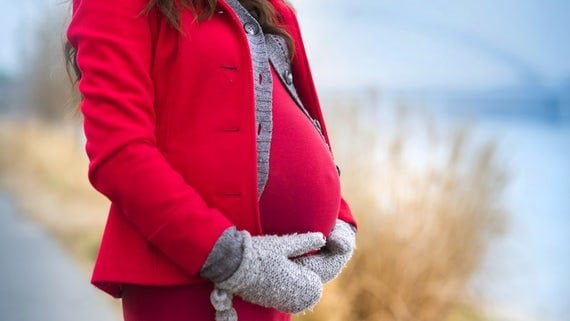Summary: Cortisol levels are higher in women who give birth during winter months. The findings shed light on why mental health disorders are more common in those born during colder seasons.
Source: Cardiff University
Levels of the stress hormone cortisol are higher in women who give birth in the autumn and winter than those who give birth in the spring or summer, finds a new study by researchers at Cardiff University.
The new findings could explain why mental health disorders are more common in people born during the winter.
Professor Ros John, from Cardiff University’s School of Biosciences, explained: “Although maternal cortisol levels naturally rise during pregnancy, our data shows that autumn and winter babies are exposed to particularly high levels just before they are born. On average, women giving birth in the autumn/winter had 20% more salivary cortisol just before delivery than those giving birth in spring/summer.
“As higher levels of cortisol in pregnant women have previously been associated with a higher risk of children developing mental health disorders, the new findings could explain why these disorders are more common in people born during the winter months. They don’t, however, explain the reason why women who give birth in winter or autumn have these higher levels of cortisol.”
Seasonal changes in mood and behavior are commonly reported in the general population but considerably less is known about how the seasons can affect mood during pregnancy. Using data from the longitudinal Grown in Wales study, the Cardiff University researchers investigated the relationship between the seasons and salivary cortisol concentrations, depression and anxiety symptoms, custom birthweight centiles and placenta weight in pregnant women living in South Wales.
While the team found a link between season and concentrations of salivary cortisol at term, they didn’t find an association between season and maternally-reported mental health symptoms, birthweight or placental weight.

The study included 316 women. Data was gathered at the presurgical appointment prior to a booked ELCS and immediately after birth, through an extensive questionnaire and notes recorded by the research midwife. Cortisol was derived from maternal saliva samples.
The paper ‘Seasonal variation in salivary cortisol but not symptoms of depression and trait anxiety in pregnant women undergoing an elective cesarean section’ was published in Psychoneuroendocrinology.
Source:
Cardiff University
Media Contacts:
Ros John – Cardiff University
Image Source:
The image is credited to Cardiff University.
Original Research: Closed access
“Seasonal variation in salivary cortisol but not symptoms of depression and trait anxiety in pregnant women undergoing an elective caesarean section”. Samantha M. Garay et al.
Psychoneuroendocrinology. doi:10.1016/j.psyneuen.2019.05.029
Abstract
Seasonal variation in salivary cortisol but not symptoms of depression and trait anxiety in pregnant women undergoing an elective caesarean section
Objectives
Seasonal changes in mood and behaviour are commonly reported in the general population but considerably less is known regarding seasonality and pregnancy. This study investigated the relationship between seasons and depression and anxiety symptoms, salivary cortisol concentrations, custom birthweight centiles (CBWC) and placenta weight for pregnant women living in South Wales.
Methods
This study utilised data from the longitudinal Grown in Wales (GiW) cohort. Women were recruited at the presurgical elective caesarean section (ELCS) appointment, when they provided saliva samples and completed the Edinburgh Postnatal Depression Scale (EPDS) and trait subscale of the State-Trait Anxiety Inventory (STAI). Data on birthweight and placental weight was extracted from medical notes. Seasonal data was available for 316 participants.
Results
No association was identified between seasons and EPDS (p = .178), STAI scores (p = .544), CBWC (p = .683) or placental weight (p = .857). Significance was identified between seasons and salivary cortisol concentration (p<.001), with highest levels in autumn and winter. Adjusted linear regression identified spring (B=−.05, p=.007, 95% CI −.09, −.01) and summer (B=−.06, p = .001, 95% CI −09, −.02) compared to autumn, and spring (B=−.05, p=.009, 95% CI −.09, −.01) and summer (B=−.06, p=.002, 95% CI −.10, −.02) compared to winter to be associated with decreased cortisol concentrations.
Conclusion
This study found no association between season and maternally-reported mental health symptoms, birthweight by CBWC or placental weight but did between season and term salivary cortisol. This finding will have implications for studies that do not account for seasonality when using salivary cortisol as a biomarker.






